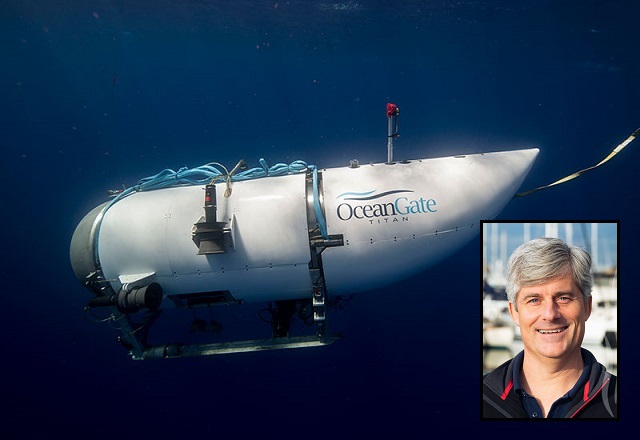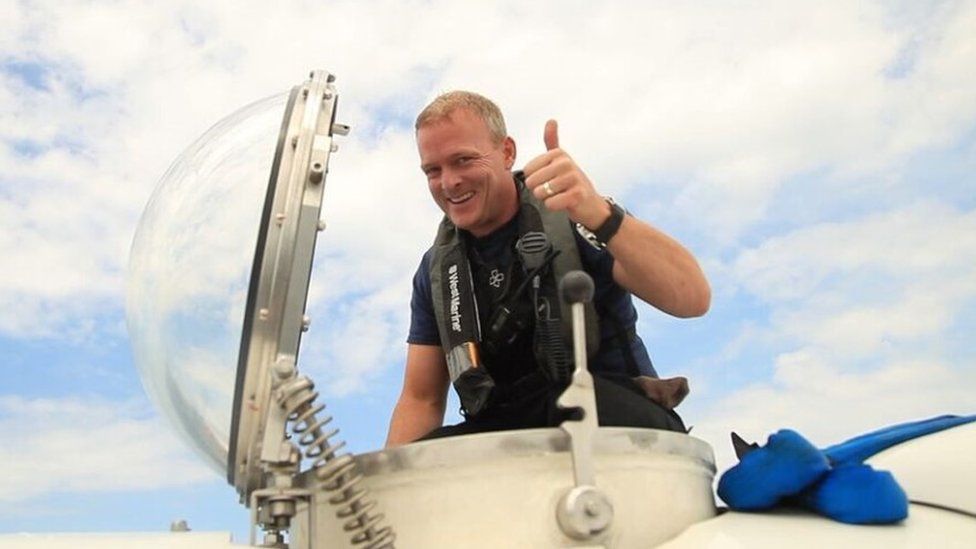Titan Sub: OceanGate CEO Didn't Want to Hire '50-Year-Old White Guys' Because They're Not 'Inspirational'Chris MenahanInformationLiberation Jun. 20, 2023 |
Popular 
Ben Shapiro, Mark Levin and Laura Loomer Warn of Foreign Influence... From Qatar

NYT: Trump Ended War With Houthis After They Shot Down U.S. Drones, Nearly Hit Fighter Jets

Trump Advisor to Washington Post: 'In MAGA, We Are Not Bibi Fans'

Eloy Adrian Camarillo, 17, Arrested in Shooting Death of Infowars Reporter Jamie White

Trump Cut Off Contact With Netanyahu Over 'Manipulation' Concerns, Israeli Reporter Claims
  OceanGate CEO Stockton Rush, who went missing aboard his Titan submersible vessel along with four other passengers on Sunday, told an interviewer he didn't want to hire a bunch of "50-year-old white guys" like other submarine companies because he wanted his team to be "inspirational." OceanGate CEO Stockton Rush, who went missing aboard his Titan submersible vessel along with four other passengers on Sunday, told an interviewer he didn't want to hire a bunch of "50-year-old white guys" like other submarine companies because he wanted his team to be "inspirational."WATCH: [Embed starts at 5:01] "When I started the business, one of the things you'll find, there are other sub operators out there but they typically have gentleman who are ex-military submariners and you'll see a whole bunch of 50-year-old white guys," Rush told a representative with Teledyne Marine in August 2020. "I wanted our team to be younger, to be inspirational and I'm not going to inspire a 16-year-old to go pursue marine technology but a 25-year-old you know who's a sub pilot or a platform operator or one of our techs can be inspirational," Rush continued. "So we've really tried to to get very intelligent, motivated, younger individuals involved because we're doing things that are completely new." "We're taking approaches that are used largely in the aerospace industry, is related to safety and some of the the preponderance of checklists things we do for risk assessments and things like that, that are more aviation related than ocean related and we can train people to do that. We can train someone to pilot the sub, we use a game controller so anybody can drive the sub." Rush's Titan sub went missing on June 18th while descending to the Titanic wreck site off the coast of Newfoundland, Canada in the Atlantic Ocean and has not been heard from since. "On Tuesday, US Coast Guard officials said at a 1 p.m. ET news conference that the submersible has about 40 hours of oxygen left," CNN reported. "The depth of the area where they went missing could pose a challenge. The deepest ever underwater rescue was that of Roger Chapman and Roger Mallinson, who were rescued from the Pisces III submersible at depths of 1,575 feet in 1973. They were trapped for 76 hours before finally being hauled to the surface," CNN continued. "The Titanic wreckage is much deeper, sitting nearly 13,000 feet below sea level."  Former OceanGate director of marine operations David Lochridge -- one of those "50-year-old white guys" Rush wanted to avoid hiring for not being "inspirational" enough -- was fired by Rush in 2018 after he reportedly blew the whistle on OceanGate by raising safety concerns over their first-of-a-kind carbon fiber hull and other systems. From TechCrunch, "A whistleblower raised safety concerns about OceanGate’s submersible in 2018. Then he was fired.": David Lochridge was terminated in January 2018 after presenting a scathing quality control report on the vessel to OceanGate's senior management, including founder and CEO Stockton Rush, who is on board the missing vessel.TechCrunch reported "the lawsuit was settled in November 2018" and "neither OceanGate nor Lochridge responded to requests for comment." UPDATE: One of Rush's "inspirational" young female employees apparently shared video on TikTok on Monday of the Titan ship descending on its (seemingly last and final) mission to the Titanic. Watch on TikTok Mirror:
Her other videos show she was hired last month and swiftly went to work by convincing her "straight ass coworker" to go to a drag show for "Pride Month" while at port. Watch on TikTok "Inspirational" is not a word I would use to describe this whole scene. RELATED: OceanGate Says Titan Passengers 'Have Sadly Been Lost'; Coast Guard Says Debris 'Consistent With a Catastrophic Implosion' Follow InformationLiberation on Twitter, Facebook, Gab, Minds and Telegram. |



